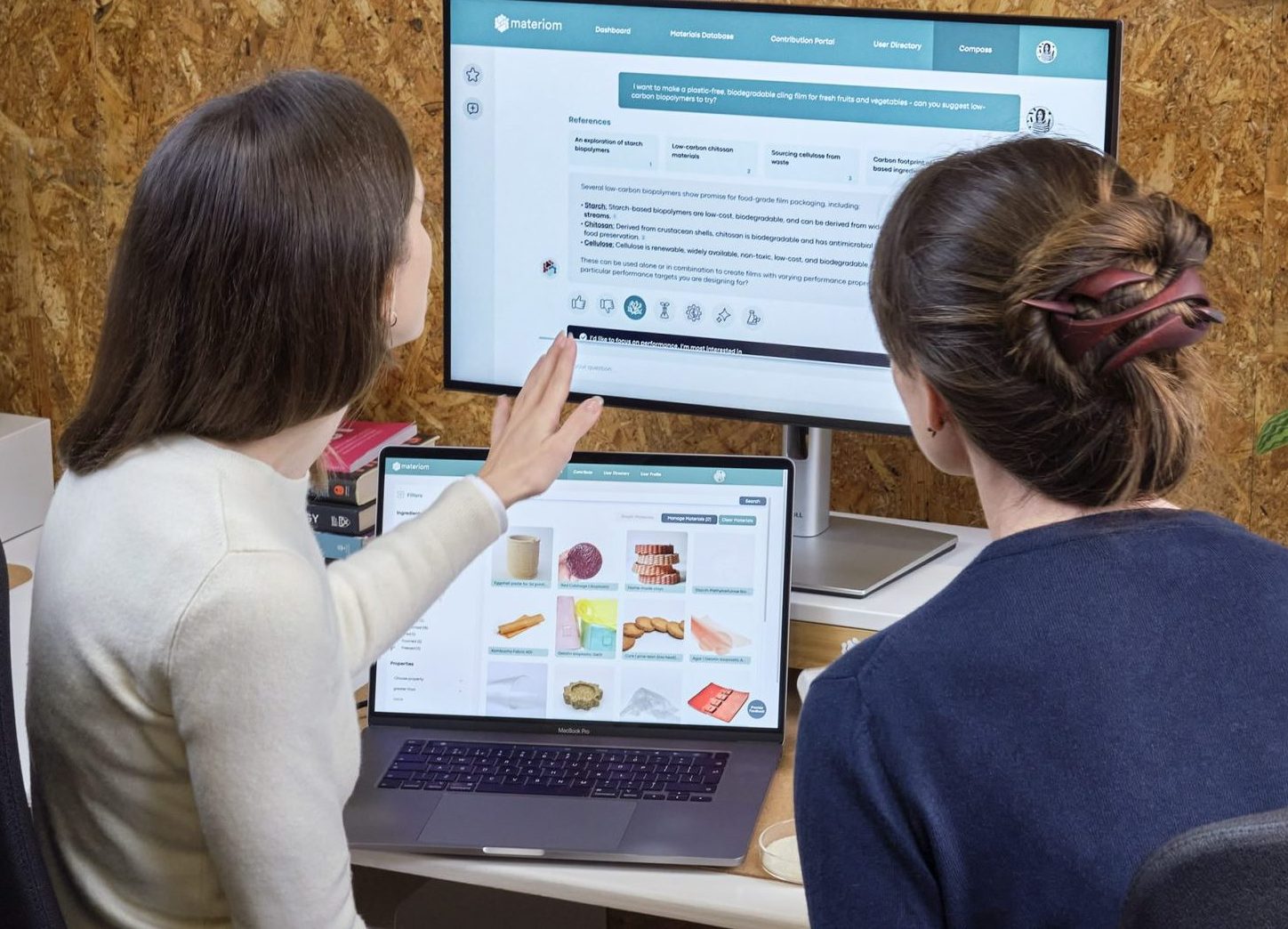Challenge
Climate change, environmental pollution, and depletion of petroleum resources necessitate an urgent transition from petroleum and fossil-based polymers to biomaterials, i.e. biopolymers derived from renewably sourced biomass, such as plant extracted sugars, starch, residues and waste.
To chart a future of truly ‘regenerative materials’, – those that can benefit both human and natural systems – Materiom, with support from the Wege Foundation, explored how biomaterials that substitute petroleum-based plastics can also aid regenerative agriculture, supporting its role in drawing down carbon, providing food security, and strengthening the resilience of natural ecosystems.
The project aimed to explore the linkages between regenerative agriculture and biomaterials so as to enhance the resilience and sustainability of local communities and markets, through the development of circular economy models.

Approach
Mainly focusing on the Great Lakes Region, Michigan (USA), the project had two interlinked research objectives:
1. Regenerative agriculture systems as a resource for biomaterials production: Analysing the potential to develop biomaterials from abundant sources of biomass linked with regenerative industries, e.g. cover crop residues and buffer zone pruning. To do so, commonly adopted regenerative agriculture practices, as well as those specific to the Great Lakes region, were identified through literature reviews and interviews with local stakeholders. The availability of potential biomass sources for biomaterials production was quantified and compared with the amounts needed to sustain crops and regenerative agriculture practices.
2. Biomaterials production as a resource for regenerative agriculture systems: Analysing the potential contributions of biomaterials at their end of life to the development of regenerative agriculture systems, e.g. capacity to act as fertiliser/nutrient sources, provide pest control, and/or soil support. To achieve this goal, the nutrient content of the most commonly produced biomaterials – as well as the most commonly used ingredients for their production – was analysed, highlighting those with significant potential to provide nutrient return flows at their end of life as compost. In addition, other beneficial services that could be provided by biomaterials were analysed, including ground coverage to suppress weeds or provide soil support.

Outcomes
Based on our research, it can be concluded that regenerative agriculture systems can provide a significant feedstock source for biomaterials production in cases where cover crop residues or other sources of waste biomass – such as discarded crop parts or buffer zone pruning – are allowed to be removed from the field. By quantifying the availability of potential biomass sources and analysing their quality, they can be matched with different types of relevant biopolymers or biomaterials.
In addition, the biomaterials market can be an essential resource for regenerative agriculture systems, enabling a potential paradigm shift from conventional to regenerative farming if biomaterials are applied to such systems at end of life. Various beneficial contributions of biomaterials to regenerative farms have been identified, including acting as fertiliser and supporting the nutrient needs of crops, or as a means of pest and weed control or as soil support.
These interesting and mutually beneficial linkages between the regenerative agriculture and biomaterials production industries could enable the production of locally sourced, sustainable materials for packaging, clothing, or structural applications, substituting their petroleum-based counterparts, while enhancing food security and resilience of natural and socio-economic systems. Such beneficial impacts become even more timely and relevant in the Great Lakes Region, given the vulnerability of its ecosystem and the existing pollution issues.
Partners
Learn More
View the full project report here.





